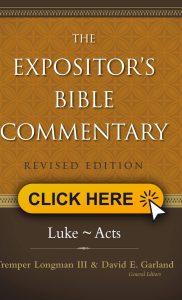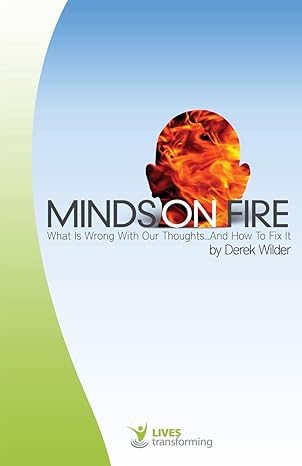The Depiction of Judaism in Acts
The relationship between the Old Testament and the New Testament and, more specifically, between Judaism and Christianity has been debated since the time of Christ. Donald Hagner recognizes that the emphasis between continuity versus discontinuity has swung back and forth between extremes within New Testament scholarship with the latter more often taking the lead.[1] From my perspective, Luke does not attempt to make a clean break between Judaism and Christianity, but instead, he communicates both a continuous and discontinuous relationship. The question at hand is how to nuance each perspective to represent Luke’s intentions.
In Acts 2:1, Luke begins by placing the physical setting of the narrative during the time of Pentecost, which, for Judaism, was the time the Law was given and, for Christians, was the time the Spirit was given. Thus, Luke immediately reveals the continuous and discontinuous nature of the relationship between the Old and New Testaments. As Richard Longenecker explains, the Holy Spirit’s coming “was in continuity with God’s purposes in giving the Law,” and yet the Spirit’s coming also “signals the essential difference between the Jewish faith and commitment to Jesus.”[2] Whereas Judaism focused on the Torah, Christianity focused on the Spirit. The frequency of quotes, allusions, and echoes of the Old Testament within Acts is also supportive of the continuity between Judaism and Christianity. For example, in Acts 3:22-23, Peter quotes Deuteronomy 18 and Leviticus 23, which point to the coming Messiah.
Longenecker contends that Peter is making two arguments: “True belief in Moses will lead to belief in Jesus, and belief in Jesus places one in true continuity with Moses.”[3] Similarly, Peter provides proof of continuity in Acts 3:25 when he quotes Genesis 22:18 and proclaims that Christ is fulfilling the covenant promise to Abraham. It is difficult to miss the importance that the book of Acts places on relational continuity between the Old and New Testaments and, thus, between Judaism and Christianity. However, as the narrative continues, Luke heightens the emphasis on the discontinuity between the two.
The climax of discontinuity likely occurs in Acts 15 where Paul’s policies for reaching the Gentiles caused significant consternation, especially with regard to the topic of circumcision (Acts 15:1). With some irony, James’s affirmation of Paul’s discontinuous initiative arrives in the form of an Old Testament reference further underlining the importance of continuity. Specifically, Luke quotes Amos 9:11-12 in Acts 15:16-17 and applies both “David’s fallen tent” and the “remnant of mankind” to the argument (ESV). More specifically, Longenecker explains that James appears to be arguing for two concentric groups that comprise God’s people: (1) a restored Israel from a fallen condition and (2) a group of Gentiles or remnant of men gathering around restored Israel.[4] James’s approach provides a beautiful image of reconciliation that supports the importance of both continuity and discontinuity necessary to reclaim all the nations in Christ.
The term “restored Israel” used by Longenecker is an appropriate title to reflect the tension between continuity and discontinuity. John Polhill argues that Christians are the “restored Israel” by recognizing that Jesus, when asked if He would restore the kingdom of Israel in Acts 1:6, replied by giving His disciples a mission to reach the nations.[5] However, Hagner further nuances the language of continuity by suggesting that “Christianity is not other than Judaism; it is the fulfillment of Judaism.”[6] Thus, Christianity ought to be understood as fulfilled Judaism. Certainly, discontinuity exists between ancient Judaism and Christianity through several modified practices such as the relativization of the temple, leniency of dietary food laws, and the elimination of the circumcision requirement. However, whether one refers to Christianity as the restored Israel or fulfilled Judaism, to deny the continuity between Judaism and Christianity misses the mark.
_______________________________________________
[1] Donald Hagner, “How ‘New’ Is the New Testament?: Continuity and Discontinuity Between the Old Testament (Formative Judaism) and the New Testament (Early Christianity),” Asian Journal of Pentecostal Studies 19, no. 2 (2016): 99.
[2] Richard N. Longenecker, Luke-Acts, ed. Tremper Longman III and David E. Garland, Revised., vol. 10, The Expositor’s Bible Commentary (Grand Rapids: Zondervan Academic, 2007), 734.
[3] Ibid., 10:767.
[4] Ibid., 10:947.
[5] John B. Polhill, Acts: An Exegetical and Theological Exposition of Holy Scripture, vol. 26, The New American Commentary (Nashville: Holman Reference, 1992), 67.
[6] Hagner, “How ‘New’ Is the New?,” 104.
Bibliography
- Hagner, Donald. “How ‘New’ Is the New Testament?: Continuity and Discontinuity Between the Old Testament (Formative Judaism) and the New Testament (Early Christianity).” Asian Journal of Pentecostal Studies 19, no. 2 (2016): 99–107.
- Longenecker, Richard N. Luke-Acts. Edited by Tremper Longman III and David E. Garland. Revised. Vol. 10. The Expositor’s Bible Commentary. Grand Rapids: Zondervan Academic, 2007.
- Polhill, John B. Acts: An Exegetical and Theological Exposition of Holy Scripture. Vol. 26. The New American Commentary. Nashville: Holman Reference, 1992.



